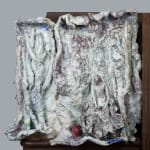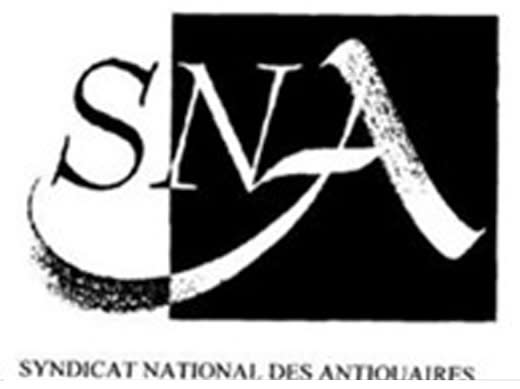Fausto Melotti
PAN AND THE HAMADRYADS, 1948 circa
Ceramic
49.5 x 215 x 51 cm
19 1/2 x 84 5/8 x 20 1/8 in
19 1/2 x 84 5/8 x 20 1/8 in
Authentic signature on back of photo, dated “Milan, 6/9/83”
Further images
This extraordinary ceramic frieze entitled Pan and the Hamadryads was designed as interior decoration for the replace of a private dwelling. The artist, Fausto Melotti, was one of the leading...
This extraordinary ceramic frieze entitled Pan and the Hamadryads was designed as interior decoration for the replace of a private dwelling. The artist, Fausto Melotti, was one of the leading lights of Italian sculpture in the twentieth century. This bas-relief is the peak of the artist’s ceramic output. It was already finished in the early months of 1950, when it appeared in the May edition of the magazine Domus; it is thus plausible to set the date of execution at least to the year before. The brief editorial noted the novelties that the artist was introducing in the late 1940s with whimsical figures becoming more and more evident:
“Today we see Melotti, initially an abstract artist, gradually going over from the familiar small vase caprices and irregular-fringed bowls to a medley of magical figures [...] angels, devils, wings, swords, fetishes of his own. Where do these increasingly clear subjects spring from? They drift like surfacing fragments, cast o from some submerged anchorage, isolated and journeying in what Melotti calls ‘No-Man’s Land “
The bas-relief frieze, made up of five parts (two corner pieces and three central ones) is designed to hide the joints. It tells of a mythological scene, though one that lacks any precise source in classical art. Along the front of the frieze an athletic youth (Pan?) rushes forward, putting the Hamadryads to light. These are the mythical wood nymphs that live under the bark of trees. Their light turns into a kind of dance amid a thicket of bare trunks in which stands a slender column bearing the bust of an idol (maybe Diana with sickle-moon on head). In contrast with the animation and convulsive gestures of the mantle front figures, the short sides of the frieze depict quiet serenity: on one side a seated pair of lovers tenderly embracing, on the other a bearded male figure, sitting apparently reading a book - a mysterious character with a circular red disc/hat at his feet like a St Jerome from Christian iconography, praying in the desert with his cardinal’s hat cast on the ground.
Melotti has skilfully spread the clay in thin sheets which he then crumples and folds as easily as paper or light cloth in such a way as to render the streaming girded gowns of the wood nymphs. Our Hamadryads are twin sisters to statuettes like the charming maiden holding two birds in her left hand, signed and datable to 1948. In style, composition, iconography and col- our scheme there seems an affinity between this frieze and (like a fragment of it, as it were) a rare narrative bas-relief depicting a centaur and a seated female figure, datable to roughly 1950.
Expertise by Andrea Bacchi
“Today we see Melotti, initially an abstract artist, gradually going over from the familiar small vase caprices and irregular-fringed bowls to a medley of magical figures [...] angels, devils, wings, swords, fetishes of his own. Where do these increasingly clear subjects spring from? They drift like surfacing fragments, cast o from some submerged anchorage, isolated and journeying in what Melotti calls ‘No-Man’s Land “
The bas-relief frieze, made up of five parts (two corner pieces and three central ones) is designed to hide the joints. It tells of a mythological scene, though one that lacks any precise source in classical art. Along the front of the frieze an athletic youth (Pan?) rushes forward, putting the Hamadryads to light. These are the mythical wood nymphs that live under the bark of trees. Their light turns into a kind of dance amid a thicket of bare trunks in which stands a slender column bearing the bust of an idol (maybe Diana with sickle-moon on head). In contrast with the animation and convulsive gestures of the mantle front figures, the short sides of the frieze depict quiet serenity: on one side a seated pair of lovers tenderly embracing, on the other a bearded male figure, sitting apparently reading a book - a mysterious character with a circular red disc/hat at his feet like a St Jerome from Christian iconography, praying in the desert with his cardinal’s hat cast on the ground.
Melotti has skilfully spread the clay in thin sheets which he then crumples and folds as easily as paper or light cloth in such a way as to render the streaming girded gowns of the wood nymphs. Our Hamadryads are twin sisters to statuettes like the charming maiden holding two birds in her left hand, signed and datable to 1948. In style, composition, iconography and col- our scheme there seems an affinity between this frieze and (like a fragment of it, as it were) a rare narrative bas-relief depicting a centaur and a seated female figure, datable to roughly 1950.
Expertise by Andrea Bacchi
Join our mailing list
* denotes required fields
We will process the personal data you have supplied in accordance with our privacy policy (available on request). You can unsubscribe or change your preferences at any time by clicking the link in our emails.








